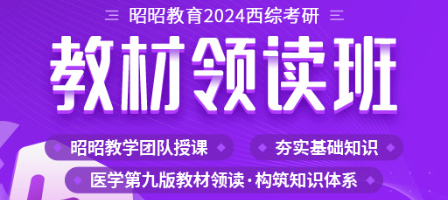
当前位置: 研招信息首页 > 历年考题(考生回忆版) > 正文
以下是小昭为大家整理的历年英语考题(考生回忆版)及答案解析,希望对即将参加考研的同学们有所帮助。
Section Ⅰ Use of English
Directions:
Read the following text. Choose the best word(s) for each numbered blank and mark A, B, C or D on the ANSWER SHEET. (10 points)
Trust is a tricky business. On the one hand, it’s a necessary condition 1 many worthwhile things: child care, friendships, etc. On the other hand, putting your 2 in the wrong place often carries a high 3 .
4 , why do we trust at all? Well, because it feels good. 5 people place their trust in an individual or an institution, their brains release oxytocin, a hormone that 6 pleasurable feelings and triggers the herding instinct that prompts humans to 7 with one another. Scientists have found that exposure 8 this hormone puts us in a trusting 9 : In a Swiss study, researchers sprayed oxytocin into the noses of half the subjects; those subjects were ready to lend significantly higher amounts of money to strangers than were their 10 who inhaled something else.
11 for us, we also have a sixth sense for dishonesty that may 12 us. A Canadian study found that children as young as 14 months can differentiate 13 a credible person and a dishonest one. Sixty toddlers were each 14 to an adult tester holding a plastic container. The tester would ask, “What’s in here?” before looking into the container, smiling, and exclaiming, “Wow!” Each subject was then invited to look 15 . Half of them found a toy; the other half 16 the container was empty – and realized the tester had 17 them.
Among the children who had not been tricked, the majority were 18 to cooperate with the tester in learning a new skill, demonstrating that they trusted his leadership. 19 , only five of the 30 children paired with the “ 20 ” tester participated in a follow-up activity.
前两题请到文末附件中下载
3. [A] benefit[B] debt[C] hope[D] price
4. [A] Therefore[B] Then[C] Instead[D] Again
5. [A] Until[B] Unless[C] Although[D] When
6. [A] selects[B] produces[C] applies[D] maintains
7. [A] consult[B] compete[C] connect[D] compare
8. [A] at[B] by[C] of[D] to
9. [A] context[B] mood[C] period[D] circle
10. [A] counterparts[B] substitutes[C] colleagues[D] supporters
11. [A] Funny[B] Lucky[C] Odd[D] Ironic
12. [A] monitor[B] protect[C] surprise[D] delight
13. [A] between[B] within[C] toward[D] over
14. [A] transferred[B] added[C] introduced[D] entrusted
15. [A] out[B] back[C] around[D] inside
16. [A] discovered[B] proved[C] insisted[D] remembered
17. [A] betrayed[B] wronged[C] fooled[D] mocked
18. [A] forced[B] willing[C] hesitant[D] entitled
19. [A] In contrast[B] As a result[C] On the whole[D] For instance
20. [A] inflexible[B] incapable[C] unreliable[D] unsuitable
Section Ⅱ Reading Comprehension
Part A Directions:
Read the following four texts. Answer the questions after each text by choosing A, B, C or D. Mark your answers on the ANSWER SHEET. (40 points)
Text 1
Among the annoying challenges facing the middle class is one that will probably go unmentioned in the next presidential campaign: What happens when the robots come for their jobs?
Don’t dismiss that possibility entirely. About half of U.S. jobs are at high risk of being automated, according to a University of Oxford study, with the middle class disproportionately squeezed. Lower-income jobs like gardening or day care don’t appeal to robots. But many middle-class occupations – trucking, financial advice, software engineering – have aroused their interest, or soon will. The rich own the robots, so they will be fine.
This isn’t to be alarmist. Optimists point out that technological upheaval has benefited workers in the past. The Industrial Revolution didn’t go so well for Luddites whose jobs were displaced by mechanized looms, but it eventually raised living standards and created more jobs than it destroyed. Likewise, automation should eventually boost productivity, stimulate demand by driving down prices, and free workers from hard, boring work. But in the medium term, middle-class workers may need a lot of help adjusting.
The first step, as Erik Brynjolfsson and Andrew McAfee argue in The Second Machine Age, should be rethinking education and job training. Curriculums – from grammar school to college – should evolve to focus less on memorizing facts and more on creativity and complex communication. Vocational schools should do a better job of fostering problem-solving skills and helping students work alongside robots. Online education can supplement the traditional kind. It could make extra training and instruction affordable. Professionals trying to acquire new skills will be able to do so without going into debt.
The challenge of coping with automation underlines the need for the U.S. to revive its fading business dynamism: Starting new companies must be made easier. In previous eras of drastic technological change, entrepreneurs smoothed the transition by dreaming up ways to combine labor and machines. The best uses of 3D printers and virtual reality haven’t been invented yet. The U.S. needs the new companies that will invent them.
Finally, because automation threatens to widen the gap between capital income and labor income, taxes and the safety net will have to be rethought. Taxes on low-wage labor need to be cut, and wage subsidies such as the earned income tax credit should be expanded: This would boost incomes, encourage work, reward companies for job creation, and reduce inequality.
Technology will improve society in ways big and small over the next few years, yet this will be little comfort to those who find their lives and careers upended by automation. Destroying the machines that are coming for our jobs would be nuts. But policies to help workers adapt will be indispensable.
21.Who will be most threatened by automation?
[A]Leading politicians.
[B]Low-wage laborers.
[C]Robot owners.
[D]Middle-class workers.
22.Which of the following best represents the author’s view?
[A]Worries about automation are in fact groundless.
[B]Optimists’ opinions on new tech find little support.
[C]Issues arising from automation need to be tackled.
[D]Negative consequences of new tech can be avoided.
23.Education in the age of automation should put more emphasis on
[A]creative potential.
[B]job-hunting skills.
[C]individual needs.
[D]cooperative spirit.
24.The author suggests that tax policies be aimed at
[A]encouraging the development of automation.
[B]increasing the return on capital investment.
[C]easing the hostility between rich and poor.
[D]preventing the income gap from widening.
25.In this text, the author presents a problem with
[A]opposing views on it.
[B]possible solutions to it.
[C]its alarming impacts.
[D]its major variations.
以上是昭昭西医考研部分考题(考生回忆版)的展示内容,因为内容较多。小昭已经将考题(考生回忆版)全部整理放到附件中(包括答案),请自行点击下载即可使用。
免责声明:本站所提供的内容均来源于网络,如涉及侵权问题,请联系本站管理员予以更改或删除。


 扫码加入
扫码加入
 扫码加入
扫码加入
 扫码加入
扫码加入
 扫码加入
扫码加入
 扫码加入
扫码加入
 扫码加入
扫码加入

